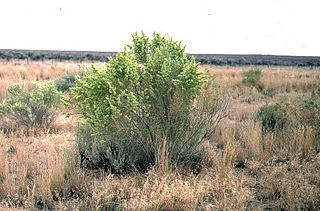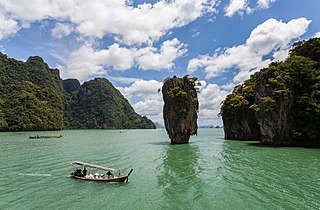Red mangrove may refer to at least three plant species:
Red mangrove may refer to at least three plant species:
Sycamore is a name which has been applied to several types of trees, but with somewhat similar leaf forms. The name derives from the ancient Greek συκόμορος (sūkomoros) meaning "fig-mulberry".
Cypress is a common name for various coniferous trees or shrubs of northern temperate regions that belong to the family Cupressaceae. The word cypress is derived from Old French cipres, which was imported from Latin cypressus, the latinisation of the Greek κυπάρισσος (kyparissos). Cypress trees are a large classification of conifers, encompassing the trees and shrubs from the cypress family (Cupressaceae) and many others with the word cypress in their common name. Many cypress trees have needle-like, evergreen foliage and acorn-like seed cones.

Reed is a common name for several tall, grass-like plants of wetlands.

The Rhizophoraceae is a family of tropical or subtropical flowering plants. It includes around 147 species distributed in 15 genera. Under the family, there are three tribes, Rhizophoreae, Gynotrocheae, and Macarisieae. Even though Rhizophoraceae is known for its mangrove members, only the genera under Rhizophoreae grow in the mangrove habitats and the remaining members live in inland forests.

Saltbush is a vernacular plant name that most often refers to Atriplex, a genus of about 250 plants distributed worldwide from subtropical to subarctic regions. Atriplex species are native to Australia, North and South America, and Eurasia. Many Atriplex species are halophytes and are adapted to dry environments with salty soils.
The flora of Great Britain and Ireland is one of the best documented in the world. There are 1390 native species and over 1100 well-established non-natives documented on the islands. A bibliographic database of the species has been compiled by the Botanical Society of Britain and Ireland. The lists give an English name and a scientific name for each species, and two symbols are used to indicate status.
Beefwood is the name given to a number of Australian trees which have timber with a red colouration resembling raw beef as follows:

Rhizophora mangle, the red mangrove, is distributed in estuarine ecosystems throughout the tropics. Its viviparous "seeds", in actuality called propagules, become fully mature plants before dropping off the parent tree. These are dispersed by water until eventually embedding in the shallows.

Rhizophora is a genus of tropical mangrove trees, sometimes collectively called true mangroves. The most notable species is the red mangrove but some other species and a few natural hybrids are known. Rhizophora species generally live in intertidal zones which are inundated daily by the ocean. They exhibit a number of adaptations to this environment, including pneutomatophores that elevate the plants above the water and allow them to respire oxygen even while their lower roots are submerged and a cytological molecular "pump" mechanism that allows them to remove excess salts from their cells. The generic name is derived from the Greek words ριζα (rhiza), meaning "root," and φορος (phoros), meaning "bearing," referring to the stilt-roots.

Avicennia germinans, the black mangrove, is a shrub or small tree growing up to 12 meters in the acanthus family, Acanthaceae. It grows in tropical and subtropical regions of the Americas, on both the Atlantic and Pacific Coasts, and on the Atlantic Coast of tropical Africa, where it thrives on the sandy and muddy shores where seawater reaches. It is common throughout coastal areas of Texas and Florida, and ranges as far north as southern Louisiana and coastal Georgia in the United States.

The tall-stilt mangrove belongs to the Plantae kingdom under the Rhizophoraceae family. R. apiculata is distributed throughout Australia, Guam, India, Indonesia, Malaysia, Micronesia, New Caledonia, Papua New Guinea, the Philippines, Singapore, the Solomon Islands, Sri Lanka, Taiwan, the Maldives, Thailand, Vanuatu, and Vietnam. Rhizophora apiculata is called ‘bakhaw lalaki,’ in the Philippines, "Thakafathi ތަކަފަތި" in the Maldives, 'Đước' in Vietnam, Garjan in India, as well as other vernacular names.

Josias Braun-Blanquet was an influential phytosociologist and botanist. Braun-Blanquet was born in Chur, Switzerland, and died in Montpellier, France.

Ao Phang Nga National Park, located in the Phang Nga Province of the Southern Thailand, encompasses parts of Mueang Phang Nga District and Takua Thung District. The park is predominantly maritime, featuring a section of the Strait of Malacca dotted with numerous limestone tower karst islands. Among these islands, Khao Phing Kan stands out as particularly well-known, having gained the nickname 'James Bond Island' due to its use as a filming location for the James Bond film The Man with the Golden Gun.
Camphorweed is a common name for several plants and may refer to:

Rhizophora mucronata is a species of mangrove found on coasts and river banks in East Africa and the Indo-Pacific region.

Rhizophora stylosa, the spotted mangrove, red mangrove, small stilted mangrove or stilt-root mangrove, is a tree in the family Rhizophoraceae. The specific epithet stylosa is from the Latin meaning "stylus form", referring to the flower.

Rhizophora racemosa is a species of mangrove tree in the family Rhizophoraceae. It has a patchy distribution on the Pacific coast of Central and South America, occurs in places on the Atlantic coast of that continent, and has a more widespread range on the Atlantic coast of West Africa.
Rhizophora harrisonii is a species of plant in the family Rhizophoraceae. It can be found in Brazil, Cameroon, Colombia, Costa Rica, Ecuador, Guyana, French Guiana, Honduras, Nicaragua, Panama, Suriname, Trinidad, Tobago, and Venezuela.

The Trinidad mangroves ecoregion covers the separate mangrove forest areas on the coast of the island of Trinidad, in the country of Trinidad and Tobago. The character of the mangroves is affected by the large amount of fresh water flowing out of the Orinoco River and Amazon River to the south, which flow northwest around the island. The mangroves of Trinidad are found on all coasts, and are usually in the estuaries of rivers, but also found in coastal lagoons.